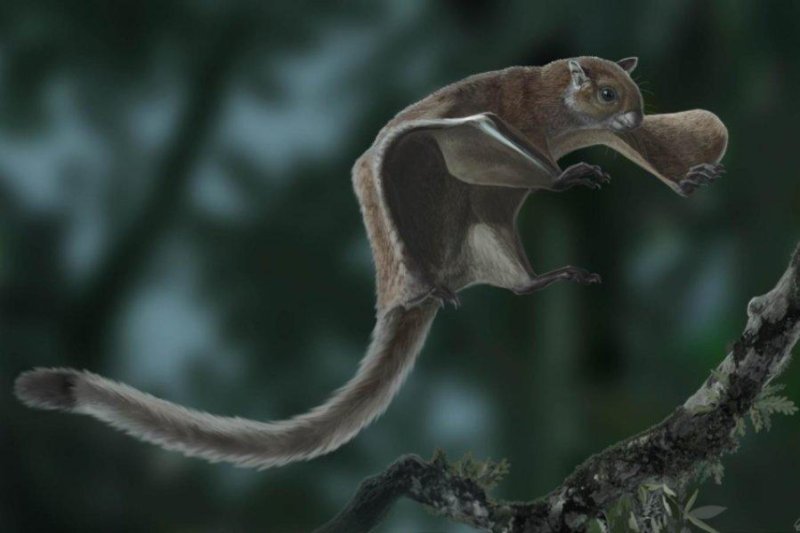An artist rendering imagines what the extinct flying squirrel species Miopetaurista neogrivensis looked like. Photo by Oscar Sanisidro
Oct. 9 (UPI) -- The discovery of the oldest known flying squirrel fossil has offered scientists new insights into the evolutionary origins of the novel mammal.
The 11.6-million-year-old fossil represents an extinct species of flying squirrel called Miopetaurista neogrivensis. Scientists described the specimen and species this week in the journal eLife.
"Due to the large size of the tail and thigh bones, we initially thought the remains belonged to a primate," Isaac Casanovas-Vilar, a researcher at the Catalan Institute of Paleontology in Barcelona, said in a news release.
Casanovas-Vilar and his colleagues conducted a comparative analysis of the flying squirrel fossil and several of its closest relatives. Their findings showed flying squirrels first evolved from tree squirrels between 25 and 31 million years ago.
Their fossil analysis also showed the ancient species' structure -- its size, shape and proportions -- is very similar to the skeletal composition of large tree squirrel species found in Asia's subtropical forests.
There are 52 known flying squirrel species living in the Northern Hemisphere. A thin membrane forms wing-like flaps stretching from limb to limb on both sides of their body, enabling the mammals to glide from tree to tree, spanning distances of nearly 500 feet.
The membrane flaps are supported by a cartilage rod extending from specialized wrist bones, unique to flying squirrels.
Previous studies have suggested flying squirrels split from tree squirrels roughly 23 million years ago, but scientists have also reported the discovery of 36-million-year-old flying squirrel remains.
"The problem is that these ancient remains are mainly teeth," Casanovas-Vilar said. "As the dental features used to distinguish between gliding and non-gliding squirrels may actually be shared by the two groups, it is difficult to attribute the ancient teeth undoubtedly to a flying squirrel."
The new analysis confirmed the 36-million-year teeth represent ancient tree squirrels.
"Molecular and paleontological data are often at odds, but this fossil shows that they can be reconciled and combined to retrace history," Casanovas-Vilar said. "Discovering even older fossils could help to retrace how flying squirrels diverged from the rest of their evolutionary tree."















